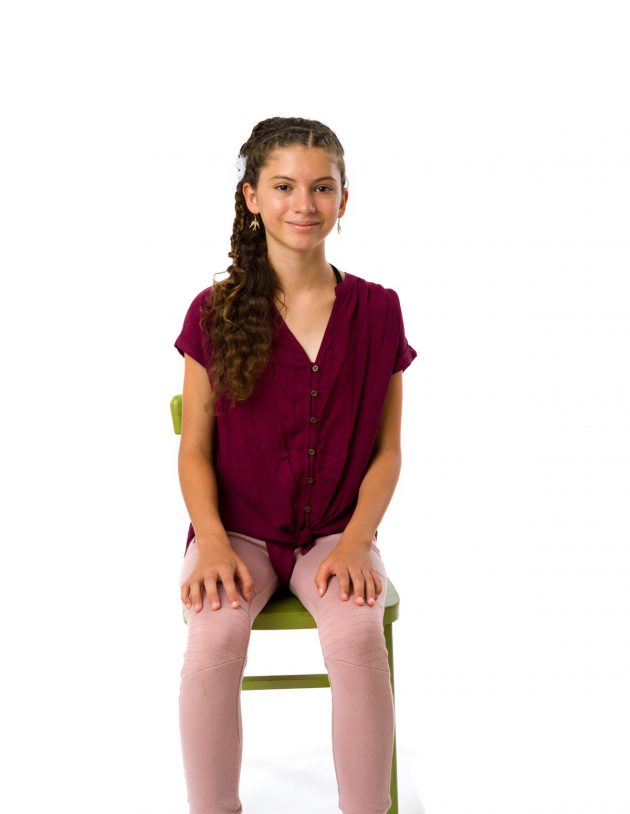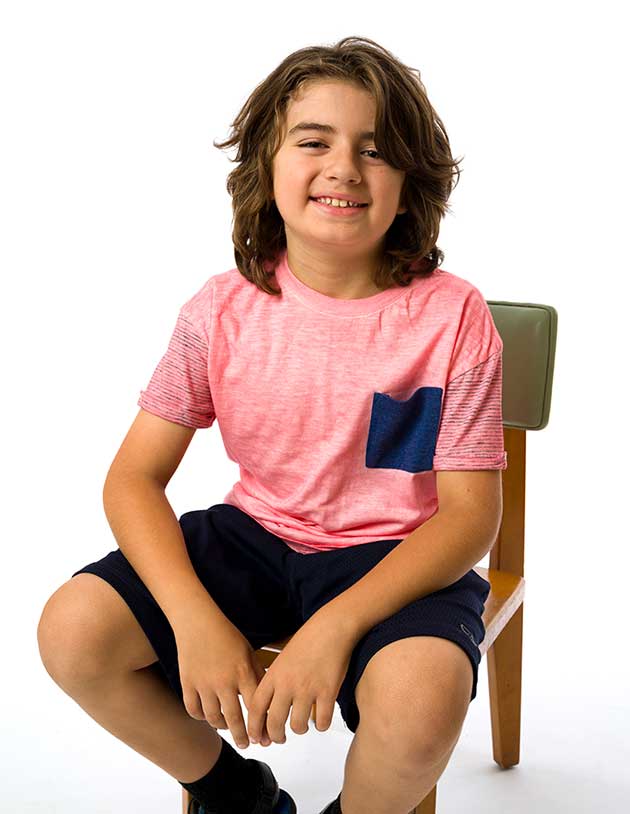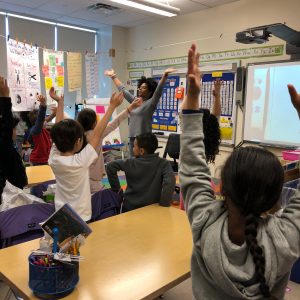A few years ago I decided to take on a position as a full-time Yoga Specialist at a charter school. I was ecstatic about the groundbreaking experience that lay ahead. It is also fair to say that I was totally naïve and in over my head regarding the enormous tasks that lay ahead: Design a year-long yoga curriculum including two lesson plans for each grade (K-3) per week, and teach thirty (30!) classes per week of 25 students each.
I had five minutes between classes to reset my room for the next group and connect to my breath. Needless to say, that was the year I turned into a “real yogi”. Or rather, that was the first year in a roughly 12-year relationship with yoga that I began to truly practice what I preached. It’s easy, of course, to be kind and generous and mindful when teaching adults who generally follow directions and typically self-regulate their behavior. However, when teaching 400 children per week who lack the ability to manage their emotions and stress, I learned that a much deeper personal practice was necessary. One that incorporated a mindful approach as well as a commitment to a self-care regimen that targeted my own nervous system’s response to stress.
In many ways I had to revolutionize my teaching methodology, in order to teach yoga to children. There was something about the giant empty space we called the yoga room that begged my students to go bonkers upon arrival to class. Put another way, the yoga room was a space in which my students felt free to be their natural child-like selves, after a rigorous day of academic learning in desks in their classroom.
In any case, I urgently needed a brand new teaching strategy to be a successful yoga teacher to children. I also needed to take a long, compassionate look in the mirror. The following are some positive classroom culture and management strategies that I came to swear by and still do.
Pace, Proximity and “With-it-ness” – You’ve Got to Move It, Move It!
Dear goodness, try being a kid in school all day long. Sometimes the day never seems to end! While as teachers we can not guarantee that all our students have a jolly old time every single moment of class, it is actually our job to keep them on their toes, to keep them fully engaged, not theirs. To that end, we have to stay on our toes. We have to get “with-it”, as they say. Often as teachers we are simply talking, or directing instruction too slowly and uninterestingly for the quick witted or faster energetic pace of our students’ young minds and bodies. Children need a hook for their attention. As teachers, we have to meet our students where they are, hook them with meaningful content, and then take them somewhere new with our teaching. I have found that three key practices support this goal:
- Vary the pace and tone at which you speak
- Keep the class flowing – transition quickly between activities
- Be present in the classroom with strong and animated body language, rather than with a low-energy, disinterested demeanor
Demonstrating with-it-ness requires us to move throughout the classroom (don’t just stay on your yoga mat!) and thereby get proximally closer to students who tend to check out or get distracted in order to keep a consistent connection to these students. When we are with-it, we intentionally make eye contact repeatedly with each student throughout the duration of a class, with the intent to truly see them. These teacher actions are critical in school children’s yoga classrooms because they signal to your students that you are truly present with them. If you are present, they are present. If you are with-it, they are less likely to go buck wild and run amok, which, quite frankly, a large open space with soft cushy yoga mats begs our young yoga students to do.
Set High Expectations – Just Do It

The fluctuating nature of both children and the yoga and mindfulness experience indicates that a class with children will inevitably include and have to accommodate many moments of distraction and lack of engagement. This is the practice, to notice when we are distracted and what tugs at our attention, and to strengthen the mental muscle of concentration or returning our focus to the object of attention.
At any given moment during a 45-minute to 1-hour long children’s yoga class, any number of students will be distracted. That said, if you set the intention and plan your lesson with the goal of 100% of students, 100% engaged 100%, of the time, the likelihood that you will steer clear of many teaching and management pitfalls that might derail your lesson objective is more likely. A curriculum coach I had when I was a full-time yoga specialist used to encourage me to include an “Anticipated Management Breakdowns” section in my lesson plan template.
The process of visualizing what might go awry with behavior, comprehension, and accessibility of yoga content, etc. in each segment of my lesson was immensely helpful to me.
With these management breakdowns in mind, I could proactively plan activities intended for maximum engagement so that most, if not all, of my students could demonstrate that the learning objectives were being met both during and after a yoga lesson. When we think through our teaching and set high expectations for a rich experience of learning, students are more likely to achieve them.
Take Nothing Personally
This important practice helps build trusting relationships. Making it clear to your students that making mistakes does not make them bad or wrong, nor does it change your willingness to care for or love them, is critical.
Remember, as Little Flower Yoga founder, Jennifer Cohen Harper often says, “All behavior is communicating a need”. A child’s behavior is never a personal attack on you, the teacher. Talk to your student about the behavior demonstrated and ask them to reflect on their needs. This helps our students see the relationship between behavior and experience.
Empowering students with the concept of choice, emphasizing that they may need to change their choices in order to have a more positive experience is a developmentally important social and emotional skill for our students. Moreover, it encourages the more thoughtful and empathetic pre-frontal cortex to get online, the significant part of the brain that is being developed in children.
Don’t Hate. Appreciate. – Positive reinforcement is seriously underrated.
Making a commitment to only acknowledge what great things are happening with your students in your classroom will revolutionize your teaching. This was literally the hardest thing EVER for me to develop in my teaching practice. I noticed that my eyes habitually perceived what was not working, or which students were not following directions. This tendency is ingrained in us by our culture. Our news media and television programming obsess over the negative, violent, and pathological behaviors in our day-to-day lives and sensationalizes and exaggerates them beyond their actual significance. The implications of this on our experience of life are both subtle and overt, and quite harmful to our psychic landscape.
On a smaller scale, if we are honest with ourselves as teachers, the incessant correcting, criticizing, controlling and demanding that many of us do in the classroom can leave our students with a similarly burdensome experience. Moreover, it depletes our inner teacher resources and exhausts us completely!
It was a revelatory practice some years ago for me to shift my attention in the classroom to accentuate the positive. I made a commitment to “shout-out” students and positively descriptively praise them for every seemingly small achievement. Make sure you praise students for a variety of things (e.g. effort, good choices, respecting their body’s need for rest, managing an impulse or recovering from an outburst) and not just for compliance or achievement.
“Shaliyah followed directions with urgency and found her yoga seat in five seconds. Good job Shaliyah!” or “Juelz, turn and give Quadir a high-five for showing grit in Crow pose! He did NOT give up, y’all!” The most exciting thing about highlighting the positive for me was watching its immediate affect on the students whose behavior wasn’t being praised. They all imitated the desired behavior and made a consistent practice of doing their best. This helped me see clearly that ALL children want to be acknowledged for being their best selves. You have to see the good in your students to have them show up that way in class.
The Look – I love you, but don’t even think about it.
Remember that teacher from your childhood in whose class every child behaved like an angel? That teacher had probably mastered her teacher “look”. Take a moment and try to remember it. The look is a steady, “I see you” gaze that causes a student to self-correct behavior that does not meet expectations or classroom agreements. The look is powerful. It stands on its own with no additional words or actions necessary to communicate your intended message. This look is a special, case-by-case-specific gaze whose subtext communicates: “I love you, but don’t even think about it…”
The tricky thing about a good teacher look is that it must communicate more love than control. It must be clear to your student via your look that you need her to self-correct the undesired behavior so that she and all the other children in class can learn yoga. They must understand that the learning, the growth, and the safety of the classroom community are at stake, not your personal emotional satisfaction as a teacher, which would be manipulation. And manipulation is a recipe for disaster in the classroom for reasons you will soon learn if you haven’t already. Communicating the subtle message through your look that you are overflowing with so much love for your students that this love forces you to hold them accountable for meeting high behavioral expectations takes time and practice.
Keep in mind that if a trusting and positive relationship hasn’t already been established, your teacher look will be impotent, and perhaps even be met with defiance. So start building those positive relationships and practicing your teacher look ASAP and add it to your toolkit.
Do less. Be more.
And last but definitely not least… this practice is all about you. A final shift that occurred for me was my relationship to asana, or pose practice. I went from practicing a moderately paced vinyasa style of asana with a short sitting meditation to practicing restoratives and a longer sit daily. I also added a bi-weekly hot bath with Epsom salt soak to my regimen. Going from time with high energy children all day to the constant motion of an athletic style of pose exploration was just too jarring for my system. I needed to reserve time in my day not just to work hard and then sleep, but also to do absolutely nothing. To sit propped up on a bolster and blocks in a restorative version of Reclined Bound Angle pose, or to throw my legs up the wall with a bolster under my sacrum and hang out there was like heaven.
By practicing doing nothing after a day of doing, going, uploading, and downloading was a way to bring my body and mind into balance. A painful time of insomnia, muddled thoughts, and inarticulate speech because of work overload was eventually soothed by my own practice of stopping to allow myself to just be. When I sat in meditation, I practiced mindfulness, anchoring my attention to my breath, emotions, thoughts, sound or sensations.
This was the biggest game changer of them all for me: balancing my “doing” scales with those of “being”. Bringing this quality of being-ness or presence to my teaching was also contagious for my kids. I delighted to observe my relationships with them deepen.
This practice rewarded me with the most precious gift of all: to watch both my students and myself transform into yogis that year.




















Thoughtful and insightful article, Crystal, thank you for this! I have a similar weekly classload and it was helpful to read how you adjusted your personal self-care practice to include baths and restorative poses. You six important strategies are all great reminders to take with us into the classroom, on AND off the mat. “All behavior is communicating a need” is a great takeaway, too. Keep doing you!
Thanks Your article was really helpful in yoga class management .
Such a beautiful article! Thank you for the inspiration! I have been a regular classroom teacher for 4 years, and I am now starting to teach yoga as a specialty teacher. This article helped bring me back to the most important aspects of teaching. <3